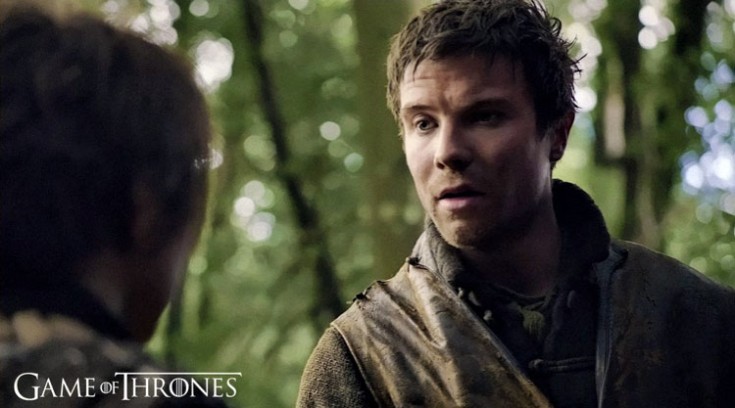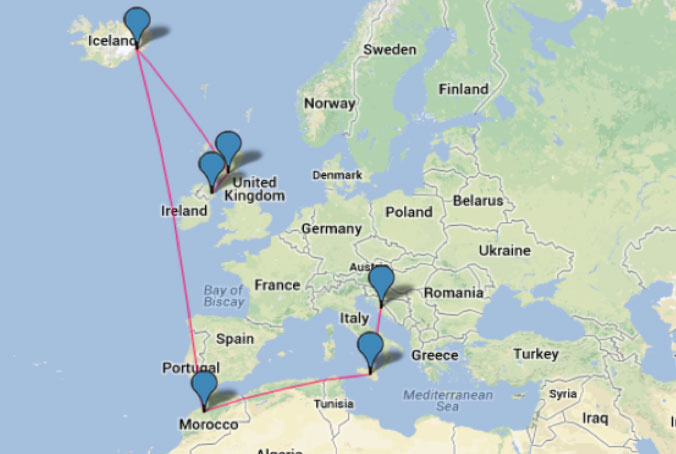Although we’re pretty sure that Hollywood films take the prize for having the most diverse filming locations, such as The Thing which was filmed in the desolate region of Alaska, or The Mummy, which was filmed on location in Egypt.
But are there any television programmes that took the same ‘no compromises’ approach to their filming location, or let’s make the stakes a little higher, are there any productions that were (or are) pulling their cast and crew all over the place in the space of a single show?
So does clocking up the travel miles make for an enticing, exciting show or are TV execs rapidly expanding their carbon footprints for nothing? Here’s international relocation experts John Mason International’s look at two of the most interesting cases.
Game of Thrones
One of the most heavily hyped, successful and expensive shows of recent years, Game of Thrones is one of an elite cabal of genre entries that have made fantasy cool, bringing the prospect of dragons, dwarves and magic into mainstream television with little of the typical stigma.
With a narrative and cast of characters that is complex and layered throughout, Game of Thrones has become a smash without coddling its viewers.
Because of its complexity however, the 3 seasons produced so far for the programme have been filmed on massive sets all over the world, from Northern Ireland to Morocco and from Iceland through to Malta, as well as a string of countries in-between.
So what, you might be thinking. The world gets smaller all the time. Ryan Air could flit you around these disparate locals in no time. But for an actual television studio (in this case HBO), to transport several tonnes of equipment, a cast of around hundred or so people, plus props and sets from one country to the next is another matter entirely.
On top of this, production companies (both television and film) need to apply for an ATA Carnet. This is a license allowing temporary admission of filming and production equipment so that the company doesn’t have to pay tax and other duties to the country that they are entering. No lugging giant metal chairs made of swords through ‘Nothing to Declare’ here.
So what might their trip itinerary look like?
If you were to travel between all the filming locations (we’ve added Scotland and Croatia, as key scenes have been shot there), one would have to travel roughly 4750 miles in total.
If a jet was to take you along the same route at a constant speed of 550mph (the average cruising speed of a 747), it would take 536 minutes, or 8.93 hours to get them there. And that doesn’t include taxiing, take off, landing or boarding the plane.
Terra Nova
From one of the most successful television series in the past ten years, to one that sank almost without trace, Terra Nova is another television programme that, although it didn’t exactly enthral its viewers, was prefaced by a gruelling and exciting production before its short 11 month run.
Despite featuring a plot seemingly ‘influenced’ by one of British sci-fi comic 2000AD’s oddest turns and the backing of one of Hollywood’s biggest wigs, Terra Nova’s production choices put it at risk almost immediately.
While the programme is set in the United States, director Stephen Spielberg (acting as the show’s producer) decided that he didn’t want to produce the programme in the same place where he had filmed Jurassic Park, perhaps since both shows involve dinosaurs in a rather heavy way.
Due to this, production on the time travelling, pre-historic family drama was transferred from its original site on the tropical islands of Hawaii and moved a whopping 4705 miles all the way to the Gold Coast of Australia.
So a few actors had to sweat it out on a lengthy plane ride, big deal right? For a normal television programme, this might not present the largest of issues. Terra Nova, on the other hand, had 250 expertly made sets that needed tearing down, shipping half way across the globe and reconstructing at the other end.
This would mean cargo ships, and as you might guess, cargo ships mean money. This is why most of us don’t have cargo ships at our disposal.
For you and I, if we need to ship to Australia, we can use an international relocation company; for large scale concerns such as a TV production company, they have to get special insurance, private haulage companies and more to ensure their equipment’s safe passage across the seas.
Unfortunately for the crew their new, Spielberg-approved set was plagued by torrential rain which meant that additional material therefore had to be shot, bloating the already chunky budget to a cool $4 million per episode.
By the time that all thirteen episodes had been aired, the production and associated costs had reportedly run over £100 million.
Maybe Spielberg took a look at the map and decided it didn’t look like too much of a haul. The Pacific Ocean is sneaky like that.
Geographical failures aside, Terra Nova was not renewed for a second season. Attempts were made to sell the series to another network, but for some reason TV execs didn’t seem keen and it seems likely that Spielberg’s dino epic will go down as one of TV’s most expensive flops.




